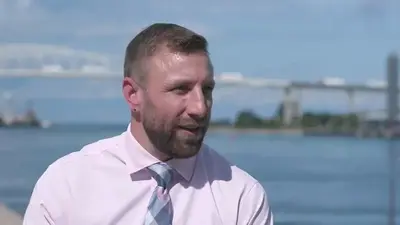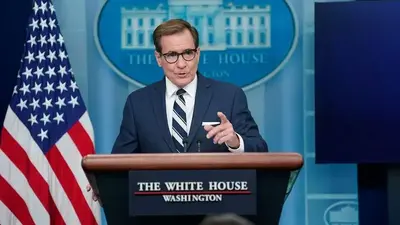Politics
A year after the launch of 988, advocates say it's saving lives
One year after the launch of the new 988 Suicide & Crisis Lifeline, nearly 5 million contacts have been answered -- and advocates say that, despite lingering challenges, the service is saving lives.
That near 5-million contact metric represents a nearly 2-million contact increase from the year before, according to a report from the Substance Abuse and Mental Health Services Administration. Prior to the launch of 988, callers could reach out to the 10-digit National Suicide Prevention Lifeline, which had been in operation since 2005.
The total contact increase represents a 46% increase in calls, 141% increase in chats and 1135% increase in texts, according to SAMHSA, which also reports that amid the sharp increase in contacts, the national average speed to answer has conversely dropped, from 2 minutes and 39 seconds down to 41 seconds.
"We are proud of the work that has been done within the first year and know that there's much more needed work," Dr. Tia Dole, chief 988 Suicide & Crisis Lifeline officer at Vibrant Emotional Health, told ABC News. Vibrant Emotional Health is the administrator of the lifeline.
Sustainable funding and staffing still a concern
A dramatic increase in volume was expected amid the switch to the lifeline's new, easier to remember three-digit number. The new number came with the expanded mission of helping with any struggles related to mental health and substance use, as well as suicidal crises.
In the run up to the launch, advocates told ABC News that there were concerns the increase in contacts would outpace the lifeline's ability to answer amid funding and staffing challenges.

The Biden-Harris administration has funneled nearly $1 billion into building out the lifeline network, including approximately $432 million ahead of the launch to prepare for the expected influx of callers after the transition. Advocates and the government have acknowledged that the previous iteration of the lifeline had been underfunded and understaffed since it began.
The lifeline network boasts over 200 call centers nationwide, across all 50 states. Advocates say that federal funding aided in increasing capacity for the lifeline nationally, but state-level data shows that answer rates are not yet consistent across state lines.
The latest available data, for May of this year, shows that only 18 states had an answer rate above 90%.
MORE: New national suicide lifeline struggling to keep up with volume, advocates say
But the service could perform better with increased funding, supporters say.
"Every single day we're saving lives, but that doesn't mean the service is perfect," Rep. Seth Moulton, D-Mass., told ABC's "This Week" in an interview. "And yes, Congress needs to do more to provide additional funding to make sure that every state has an answer rate near 100%."
Moulton, one of the co-authors of the original bill establishing 988 as the new three-digit number for the lifeline, noted the strength of the national backup centers in aiding states that struggle with their own volume, adding, "We don't want to discourage anyone from calling, and we can't let the perfect be the enemy of the good. But is there more work to do? Of course there's more work to do."

Hannah Wesolowski, chief advocacy officer for the National Alliance on Mental Illness, told ABC News that she doesn't see staffing as "a challenge that's going to be resolved overnight."
"We know across the mental health care continuum, staffing is a huge challenge," Wesolowski added. "That being said, I think there's a lot of innovation being considered. There's a lot of opportunity for peers to be filling some of this workforce capacity need. We haven't seen as much impact. We know that we need more workforce, but the call centers themselves have been able to stand up to the demand. It's just a question of how long and can we quickly implement some diversified strategies that bring more folks into the workforce to serve this need."
Some states have created their own funding plans for their 988 infrastructure in the form of budgetary appropriations or cell phone taxes similar to how 911 call centers are funded.
As of now, just six states -- California, Colorado, Minnesota, Nevada, Virginia and Washington -- have implemented cell phone taxes to fund their call centers year over year, while two others, Oregon and Delaware, have bills awaiting their governors' signatures.
Advocates have long touted the cell phone taxes as a sustainable way to fund call centers at the state level.
"It's still only eight states. It's leaving money on the table," Wesolowski said, adding that several other states had proposed legislation to implement the cell phone taxes, but many of those bills failed to pass before the end of the legislative sessions.
Some replaced those bills with appropriations, she said, "but that's money you're going to have to keep going back for, year after year, and that does concern me when thinking about the long term scalability and sustainability of 988 and the crisis continuum of care."
Expanding the lifeline's services
Amid efforts to increase staffing, the lifeline has also rolled out some new programs over its first year, including an LGBTQ+ youth line that just became a permanent subnetwork earlier this month.
Dole, Vibrant's chief 988 officer, explained that the adoption of the subnetwork follows a "successful" pilot program that began in September 2022. The LGBTQ+ line has accounted for 6% of calls, 14% of chats and 17% of texts routed by the lifeline since the pilot began, Dole said.
"LGBTQI+ mental health services recognize that there is no one-size-fits-all approach to mental healthcare," she added. "Expanding the LGBTQI+ youth pilot line is one step of an ongoing effort to strengthen partnerships and services that enhance access to crisis care for historically marginalized populations at higher risk of suicide."
The lifeline also offers services specific to military veterans with a link to the Veterans Crisis Line. Approximately 1 million out of the 5 million contacts received in the last year were for the veteran's line, according to SAMHSA.
MORE: Ambitious new campaign aims to reduce veteran suicide rate by half
On Thursday, the Department of Health and Human Services announced the rollout of Spanish-language chat and text services, in addition to the Spanish call option that had been available.
HHS Secretary Xavier Becerra noted the expansion of Spanish services in a release on Thursday, saying, "988 is about delivering life-saving resources to Americans facing mental health challenges, and now we can say that to you in Spanish."
Looking ahead, Dole explained that the lifeline is developing a video call option for deaf or hard-of-hearing American Sign Language users. There is not currently a date set for the service to go live, but Dole said the "goal and hope" is to launch in mid-2023.
Raising awareness
Advocates say awareness is another major priority for the second year of 988.
A NAMI-Ipsos poll released ahead of the anniversary found that 82% of Americans are not familiar with 988.
"I think there was some concern when we launched this a year ago that we didn't want to publicize it too much and risk overwhelming the system because we want everyone to have confidence when they pick up the phone and dial 988," Moulton said.
"But the truth is that it's been working exceptionally well despite the exceptionally high numbers of people calling," he added. "These aren't just statistics. They're lives, including a lot, a lot of kids' lives that we're saving every single day. And so we've got to get the word out. We need more people to know and yes, we need more resources to ensure that every single call gets answered and nobody is left behind."
Dole said that Vibrant is working on outreach, particularly to "historically harmed and excluded populations at higher risk of suicide." She said awareness campaigns will be live in fall 2023.
"I want this to be as ubiquitous as 911, and for people to say, 'Oh, I'm struggling with my mental health, 988 is where I call," Wesolowski said. "For people to just know and for it to be commonplace and not something people even have to think about."
If you are struggling with thoughts of suicide or worried about a friend or loved one, call or text the Suicide & Crisis Lifeline at 988 for free, confidential emotional support 24 hours a day, seven days a week.
ABC News' Quinn Scanlan contributed to this report.
-
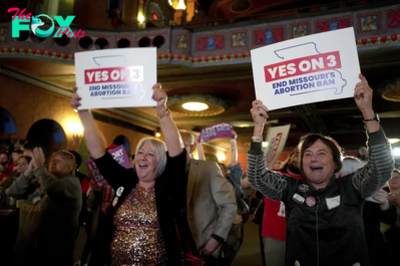
 Politics4h ago
Politics4h agoHow the 10 States’ Abortion Ballot Initiatives Fared in the 2024 Election
-
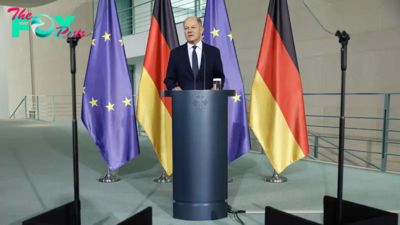
 Politics4h ago
Politics4h agoHow World Leaders Are Reacting to Trump Winning the U.S. Presidential Election
-

 Politics10h ago
Politics10h agoDonald Trump Wins 2024 Election
-

 Politics10h ago
Politics10h agoTrump Declares Election Victory in Speech to Supporters
-

 Politics11h ago
Politics11h agoAmerica’s glass ceiling remains − here are some of the reasons why a woman may have once again lost the presidency
-

 Politics11h ago
Politics11h agoBallot measures to legalize recreational use of cannabis fail in Florida, North Dakota and South Dakota
-
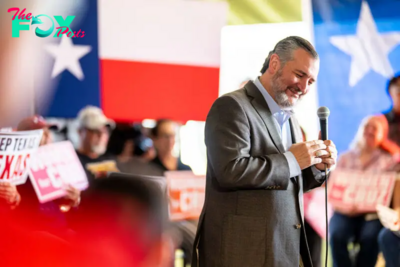
 Politics15h ago
Politics15h agoTed Cruz Wins Re-Election in Texas
-

 Politics15h ago
Politics15h agoLauren Boebert Wins Re-Election in Colorado




